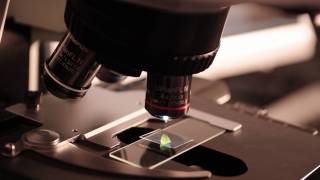Liver Stiffness Anti-Fibrotic Candidate Achieved Statistically Significant Reductions

A French biopharmaceutical company in NOX therapies announced the final results of its Phase 2 trial of GKT831 in treating primary biliary cholangitis (PBC).
The GKT831 at 400mg twice-a-day (BID) dose achieved a 22 percent reduction in liver stiffness, as compared to a 4 percent increase for placebo in a pre-defined patient population with an estimated liver fibrosis stage of F3 or higher.
This is important news since it is difficult to treat this patient population, who is likely to progress to cirrhosis, liver transplant or death.
The final Quality of Life (QoL) metrics as measured by the PBC-40 questionnaire show improvements in all QoL domain scores at weeks 12 and 24 for the 400mg BID dose.
Philippe Wiesel, Chief Medical Officer of Genkyotex, said in a press release, "The full efficacy and safety data from our Phase 2 trial highlight the potential of the GKT831 vaccine as a possible treatment for multiple complex and difficult to treat fibrotic disorders, including NASH and PSC.”
Liver stiffness is an indicator of liver inflammation (edema), cholestasis and fibrosis. In multiple liver diseases, including PBC, NASH, and PSC, liver stiffness correlates with liver fibrosis stage (F0 to F4).
Bile produced in your liver travels via these ducts to your small intestine where it aids in the digestion of fat and fat-soluble vitamins (A, D, E, and K). When the ducts are destroyed, bile builds up in the liver contributing to inflammation and scarring, says the Liver Foundation.
In PSC, increases in liver stiffness are associated with adverse disease outcomes, including liver transplant, hepatic complication, and death.
NOX (NADPH oxidase) was originally identified in immune cells, where it has an important role in destroying microbes. By 2005 a family of NOX enzymes had been described and designated NOX 1-5 and DUOX1 and 2.
All of these enzymes produce reactive oxygen species (ROS).
High levels of ROS have been associated with tissue damage, so early therapeutic strategies focused on ‘scavenging’ ROS to reduce tissue damage levels.
However, these strategies did not prove clinically effective. More recently, it has become clear that the role of ROS in disease include more subtle effects beyond tissue damage. Reversible oxidation of proteins by ROS has been identified as a fundamental cellular signaling mechanism – important in both health and disease.
This reappraisal of the role of ROS points to an opportunity for the second generation of more targeted anti-oxidative therapies.
The 24-week randomized, double-blind, placebo-controlled phase 2 study was conducted in 62 centers in the USA, Canada, Belgium, Germany, Greece, Italy, Spain, UK, and Israel. The trial enrolled PBC patients with inadequate response to ursodeoxycholic acid.
This trial is one of the largest Phase 2 PBC studies conducted to date.
Our Trust Standards: Medical Advisory Committee

























